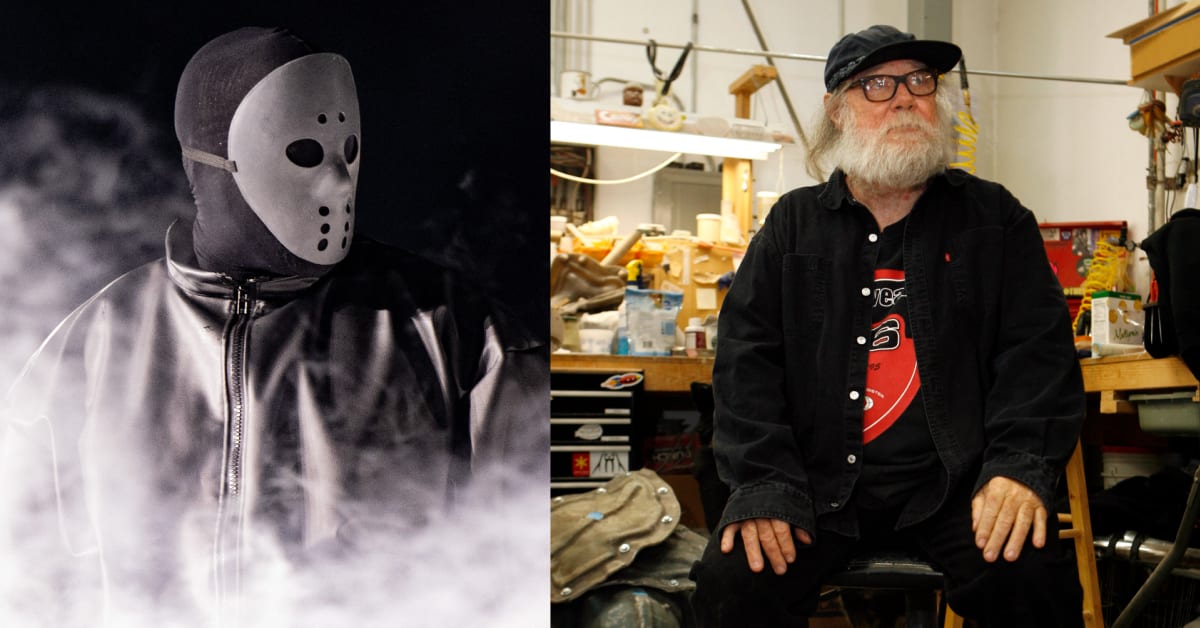A dizzyingly unencumbered Paul McCarthy performance piece, now nearly 30 years in the rearview, has returned to the conversation thanks to some seemingly timely Instagram activity from the artist formerly known as Kanye West.
Fans were given a taste of the 1995 piece in question, titled “Painter,” in a series of IG Stories updates from Ye, who provided no commentary when sharing the clips. For those unfamiliar with the Salt Lake City-born, Los Angeles-based artist’s work, it’s likely that “What the fuck?” and related variations were uttered in near unison in reaction to experiencing the piece for the first time. But for those not new to McCarthy’s work, the fact that Ye is apparently deriving inspiration from this particular 50-minute video piece can be viewed as very much in line with the 24-time Grammy winner’s extensive back catalog of oft-theorized-about reference points.
Below, we take a closer look at “Painter,” including its own history in the art world and what it may or may not mean within the larger context of the Ye-iverse.
Who is Paul McCarthy?
The artist, now 79, is known for frequently pushing against the limits of the very definition of art itself, including by offering satirical takes on the idea of genius. This boundaries-stretching, norms-ignoring approach also extends to his testing of the audience, particularly in connection with his more graphic performance pieces. 1976’s “Class Fool,” for example, saw him nakedly smearing himself with ketchup and vomiting.
Ina 2013 interview with the New York Times, McCarthy, then working on his White Snow project, reflected on his path as an artist, notably one Randy Kennedy described as “more ambitious than almost any American artist” at the time.
“It’s necessary to do what I have to do, and I see the art world the same way,” McCarthy said.
At multiple points in Ye’s career, this “more ambitious than almost any American artist” descriptor could also have applied to his work.
Here’s more on the core ideas in McCarthy’s work, straight from contemporary and modern art gallery Hauser & Wirth:
Whether absent or present, the human figure has been a constant in his work, either through the artist‘s own performances or the array of characters he creates to mix high and low culture, and provoke an analysis of our fundamental beliefs. These playfully oversized characters and objects critique the worlds from which they are drawn: Hollywood, politics, philosophy, science, art, literature, and television. McCarthy’s work, thus, locates the traumas lurking behind the stage set of the American Dream and identifies their counterparts in the art historical canon.
What’s the history of his “Painter” piece?
Per Tate, “Painter,” circa 1995, is a single-channel color video spanning about 50 minutes in length. It is intended to be presented using either a projector or a monitor, notably in a darkened room, and shows McCarthy himself wearing various prosthetics depicting comically exaggerated human features. At one point, McCarthy puts a meat clever to good use by pounding one of his prosthetics-enabled oversized fingers until it detaches from his body.
The piece is widely interpreted as a satirical meditation on the art world at large, though McCarthy is also speaking to the praise often given to artists of a certain stature. Driving home the dichotomy here, of course, is the clown-like features McCarthy dons for the video, which was filmed in Hollywood.
Why is Ye sharing this, and why now?
Image via Ye on Instagram
Ye, not unlike McCarthy, has frequently used his own relationship with the art world, which has ranged in tone from a fraught and grueling battle to near-unanimous praise, in his work. But as for why, exactly, “Painter” is speaking to him now, that remains to be seen.
The more performance art-aligned elements of McCarthy’s work offer a possible entry point here, as Ye has frequented such practices across his career, including by way of an ultimately scrapped Super Bowl piece with Shia LaBeouf and then collaborators Nastja Säde Rönkkö and Luke Turner. In 2016, Ye’s The Life of Pablo track “Famous” was brought to life in a music video featuring mid-sleep wax figure versions of multiple familiar celebrities, Donald Trump and Bill Cosby among them. Notably, the video, and the later-displayed physical pieces at the center of its uniquely controversial imagery, took inspiration from a painting by Vincent Desiderio.
McCarthy’s use of oversized human features, of course, is also complementary to Ye’s work, particularly as seen in the most recent Vultures listening experiences alongside Ty Dolla Sign.
But for a stronger comparison, perhaps it’s best we point to some past remarks from McCarthy himself. Speaking with Charlotte Burns for The Art Newspaper back in 2011, the artist spoke with his usual candor about how he views the differences between Europe and the U.S. in terms of how it respects its artists. The infrastructure at the core of the Los Angeles scene, specifically, was assessed by McCarthy as being more celebrity-driven than art-focused, which is a criticism Ye has explored throughout his work, and not just with the aforementioned “Famous” rollout.
“There was more sympathy and more opportunities for my work in Europe,” McCarthy, who has also used Hitler and Trump in his work, said at the time. “Even in the 70s, there seemed to be more sincere interest in Europe than here. My work is dirty, the abject. Maybe that’s it. In one way, LA is a place that really isn’t interested in art. It has Hollywood and celebrities. Maybe in America, and certainly in the past, artists are seen as just one step above criminals.”
Related
Read the full article here

.jpg)






